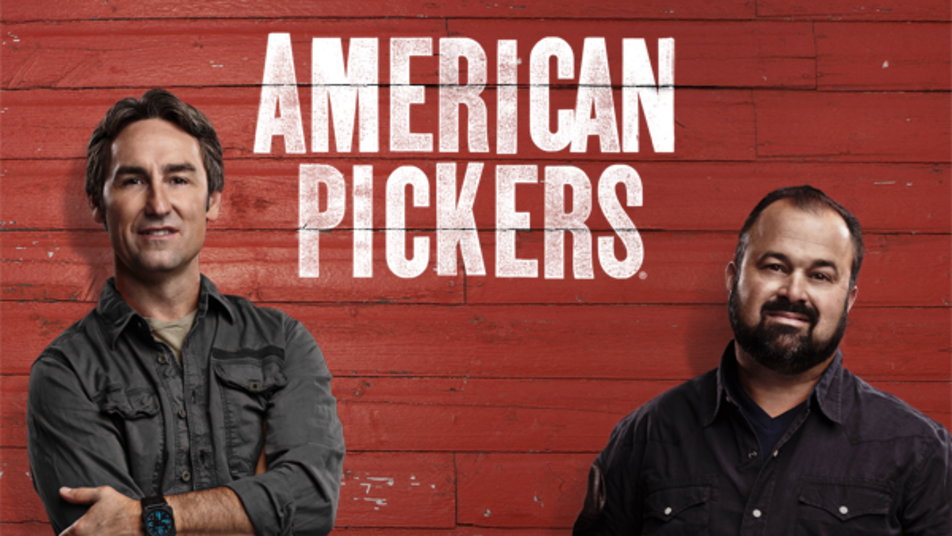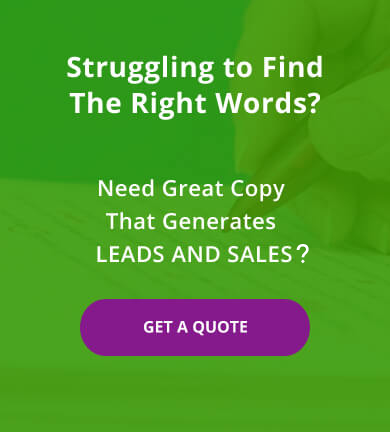The Secret to Writing Product Descriptions That Sell
How to Paint a Tantalizing Picture in the Reader’s Mind

Your product description must help the reader visualize herself with your item.
You have a quality product. You’re confident it has tremendous sales potential. But now you need to persuade buyers. How can you craft a winning description that attracts attention and compels readers to reach for their wallet?
Effective product descriptions require the right combination of elements. When the product photos, features, specifications and benefits all come together to create an attractive offer, you’re likely to see sales success.
Imagine yourself browsing products in an online store. You’re looking for shoes to match an outfit you recently bought. Suddenly, something catches your eye – a pair of red shoes.
But the shoe itself is not the only thing that holds you spellbound. It’s the combination of the image of a young woman wearing the shoes with an outfit similar to yours. It’s also the product copy, listing all the various ways you can pair the shoe with other clothing in your wardrobe. It’s personal, direct and benefit-oriented. Next thing you know, you’ve got your credit card in hand.
Create Desire with Well-Written Product Descriptions
Effective product copy is challenging to write, but it’s well worth making the effort or hiring a professional copywriter because the right words can have such a powerful impact on the conversion process.
The first job of a product description copywriter is to craft copy that creates desire. Your product description should paint a picture in the reader’s mind. Write product descriptions that not only describe what you’re selling, but also connect with your customers on an emotional level. Help them imagine themselves with the product and the solution working for them.
Take a page from the realtors’ handbook. Real estate agents will tell you that when showing a home, the key to sales success is getting the buyers to envision themselves living in the space. If you can help them imagine cooking in the kitchen, drinking a cup of coffee on the porch, or playing with their kids in the backyard, you’ve got a potential sale in the works.
The same holds true when writing product descriptions. If you can get prospects to visualize themselves with the product, you tap into their emotions to create desire, and they’re much more likely to buy.
Inform and Persuade
If you’re advertising without any product description, you’re unquestionably missing out sales. Don’t pass up the opportunity to make a compelling case for your item.

Make a strong case for why your prospect can’t live without your product.
Do you remember when you were a kid desperately wanting a particular toy? When you asked your parents, did you simply provide the product name? No, you told them about all of the toy’s amazing features. You described how you would play with the toy and how it would keep you occupied for hours. You made a strong case to compel your parents to buy the toy.
Do the same with your product descriptions – inform and appeal to the buyer’s emotions – and you’re much more likely to get your virtual cash register ringing.
Don’t Use the Manufacturer’s Product Description
If you’re using only the straightforward, very basic text provided by the manufacturer to describe your product, you’re limiting your success. In most cases, those descriptions are dull and uninspiring. You’re better than that.
You may also find your competitors are using the exact same copy, which begs the question: Why should someone buy from you over them?
You’ll do much better if you find a way to stand out from the crowd. Creative, captivating wording of your product description gives you that ability.
Know Who You’re Selling to
One of the primary rules of copywriting product descriptions is to write to one person, not a group.
Say, “You’ll love the way this skirt hugs your curves; Not, “Many women like the way this skirt hugs their curves.”
Your product description won’t hit the mark if it’s generic and targeted to a range of audience members. It’s the difference between trying to connect with a large, diverse crowd and speaking personally and intentionally to one person as if he or she is your good friend.
Identify your ideal target buyers and focus on them.
Good product copy addresses them using words like you and your and answering questions such as:
- Who is this product for?
- What is the major problem your buyer is trying to solve?
- What is likely to be important to them regarding this product?
- Why is this product useful or better than competitor products?
- What words does your buyer use when discussing this type of product with friends?
- What type of content style will your buyer appreciate (i.e. short bullets, detailed explanations, witty tone, etc.)?
Help your buyers understand why your product is worth owning and what they’ll be missing if they don’t make the purchase.
Use Buyer Personas to Personalize Your Copywriting
Creating buyer personas can guide your product copy. Those personas help you understand the pain point that your target buyer faces so you can tailor the product description to that individual.
According to HubSpot, “A buyer persona is a semi-fictional representation of your ideal customer based on market research and real data about your existing customers. When creating your buyer persona(s), consider including customer demographics, behavior patterns, motivations, and goals.”
Here’s an example of a buyer persona.
Kerry, a stay-home-mom, age 36, who is married and has two children. She is college-educated and lives in an upscale suburb. Kerry sends her children to private school and has them enrolled in numerous extra-curricular activities. Kerry plays tennis at her local country club twice a week. She likes designer products and drives a Lexis LX that cost $86,000.
Feel like you know Kerry? If you were to write a product description targeting her, now you have a much better sense of what features and benefits of your product might appeal to her, and you could craft your copy accordingly.
Benefits First, Everything Else Second
Of course you’re excited to tell your audience everything your product does — all the fantastic, cool features you spent years working on.
The truth?
Your audience doesn’t care so much about features. The question they want you to answer is:
“What’s in it for me?”
Mention the product features but entice with the benefits that address their pain points.
- Selling an acne medication? Don’t focus on the list of multi-syllabic ingredients (features). Tell the prospect how those ingredients will give her much clearer skin in less than one week (benefit).
- Selling a reclining chair? Don’t focus on the high-quality springs beneath its upholstery (features). Tell the prospect how comfortable he’s going to be watching Sunday’s football game, beer in hand (benefit).
- Selling your minivan? Don’t make your pitch about the engine and handling (features). Tell the prospect how you’ll be able to comfortably fit all the kids and their friends when you drive the soccer carpool (benefit).
Make the Complex, Simple
Do you sell complex products that an end-user may find hard to understand? Find a way to simplify your product description.
Instead of emphasizing 128GB memory card for cameras, say: “Never run out of space while on holidays. Capture every moment with a Brand X memory card.”
Whether your products have a specific function, like a chainsaw, or a personal purpose, like clothes or jewelry, their purpose is to improve the buyer’s quality of life in some way. When you write simply, so readers can easily imagine using and enjoying your product, they’re more likely to buy.
Consider these two examples:

Method Home, the seller, could have easily talked about the soap formula for this product but instead chose to focus on how your hands feel after using Method Home. – soft, clean and ready to be tucked into mittens. And for bonus points, they even touched on holiday excitement using words like “holiday spirit” and “wonderful time of the year.” Makes you almost wish it was Christmas already so you could put this holiday hand wash in your guest bathroom.
Now here’s an example that missed the mark. It’s an ad for ACUVUE contact lenses. The writer begins by explaining what to look for in contact lenses and ties it into the benefits of ACUVUE 2 as the ideal choice for first-timers. But it goes downhill in the bullet points.

- Isn’t “comfort and freedom” what all contact lenses offer? How are Acuvue’s lenses special?
- Why do you need “Class 2 UV Protection”? And what about Class 1 Protection? Don’t you need that too (whatever it might be)?
- What does crisp vision mean? Will you see as good or better than with glasses?
- What’s the benefit of a hydrogel contact lens vs. some other type of lens?
The copy is for someone who is using a contact lens for the first time, but the wording suggests they’re speaking to someone with knowledge and experience with contact lenses. Fail.
As you can see, it is crucial to hire an experienced product description copywriter who knows the importance of “showing” the benefits as they relate to the target audience.
Clearly Outline the Key Benefits
The success of your product pages hinges on your ability to convey the benefits to the reader. If you’re in a saturated market, find a way to sell a benefit that your competitors haven’t leveraged.
Check out the creative way the copywriter highlights benefits in the bullet points for the tea below with words like “Provides abundant energy” and “Promotes fat burning and weight loss.” Wow, I need that!

Not sure what your product’s benefits are? Here’s a quick tip to find out. Comb through user reviews of the product or competing products to find sales copy gold. What are the specific benefits users talk about when reviewing similar products? They’ll tell you exactly what they love. Use those points to convince prospective buyers that your product offers measurable value and eliminates a pain point.
Incorporate Storytelling

Selling a product with tons of competition? Does it seem like the other sellers have already come up with all the obvious benefits? Tell a story about the brand in your product copy.
- What inspired the product? What’s its backstory?
- Where’d it get its name?
- How was it made?
- Which specific materials or ingredients did they use?
- What are some user experiences with the product?
If you’ve ever watched the show American Pickers, you know the pickers, Mike and Frank, don’t go through someone’s attic choosing to buy everything they see. They’re looking for products with a good story because they know stories sell.
A rusty, old Texaco sign from a gas station gains value once the pickers learn it was from a gas station once owned by Franklin Delano Roosevelt. A faded poster from a traveling circus has more selling power once the pickers learn it was hand-painted by one of the one of the Flying Wallendas, a family of circus performers known for their high-wire acts.

Even an ordinary student’s desk becomes extraordinary when the pickers learn it was the only item that survived the great Kansas fire of 1932 in Wichita’s one-room schoolhouse. Sorry, to say, those examples are made up, but surely you get the idea.
Tell a fantastic (but truthful) story that will engage your audience and connect with their emotions. People buy into a story when it’s personalized and relatable. It’s a fresh, alternative to the generic copy everyone else has written and an effective tactic for endearing you to your audience. They’ve seen the benefits lists on your competitors’ sites, but your story will win buyers’ hearts.
Leverage Social Proof
Consumers trust fellow consumers. They often turn to reviews and social media to learn what others are saying about a product. If you can leverage social proof for your target audience, they’re more likely to believe your claims.
Use quotes from customer feedback or product reviews. They give a prospective customer a buyer’s point-of-view.
Even better is if you can Include the customer’s picture and name to add credibility to the review.
Make it Easy to Read
People are busy and they’re overwhelmed with materials to read. For those reasons, they often skim for information to understand a product and make a purchase decision.
As a product description writer, make it easy for buyers to connect with your content.
Use bullet points for scannability. It ensures that readers who are “just passing through” still get your message.
Optimize for Keywords
The goal is not just to write product descriptions, but to sell. That’s where SEO (search engine optimization) comes in. Optimize your descriptions with keywords your target audience is likely to use when searching for a product or service like yours and you increase the likelihood that Google will show your website in its search results.
Remember to use LSI (latent semantic indexing) keywords, which are words and phrases with a high degree of correlation to your target keyword or subject. For example, if your keyword is flowers, your LSI words could be: floral arrangement, bouquet, florist, roses, greenery etc.
Also keep in mind that long-tail keywords, those keyword phrases with three to four words that are very specific to what you are selling, perform better on search engines. Using the flower example again, your long-tail keywords might be: floral arrangements with roses, or bridal bouquets for fall weddings, or florists in Miami, Florida.
Using those keyword strategies, your product copy is more likely to show up in organic (as opposed to paid/sponsored) search results and drive quality traffic to your website.
Conclusion
Your product description can make or break the success of a product. Done right, it will attract buyers and increase conversions (sales).
If you plan to write your own copy, read other product descriptions for similar products to get ideas, identify the benefits your product provides, tell your product’s story, and optimize your product copy for keywords.
If writing good product descriptions is difficult for you or not the best use of your time, consider working with an experienced product description or e-commerce copywriter.
Author Bio
Chima Mmeje has a weak spot for small businesses because she likes rooting for the underdog. She is an experienced copywriter who has been published on numerous top blogs such as Jeff Bullas internet marketing blog. Chima excels in creating SEO-optimized web content that drives traffic and increases conversions for online businesses. You can find her at Zenith Copy.
* * *
Contact Susan Greene
Do you need help writing your product descriptions? Work with a product description copywriter and watch your sales soar!
Get a quoteTestimonial
Excellent work
Copy approval of the skincare article went very smoothly, and we don't need to make any further changes. Thank you for your excellent work!
Nozomi Araki
International Corporate Communications
Brain Center Inc.
Tokyo, Japan

